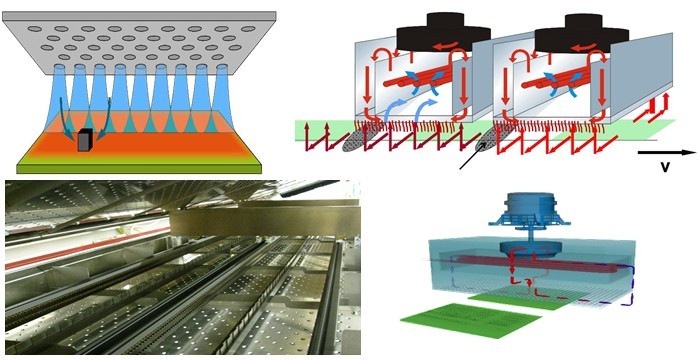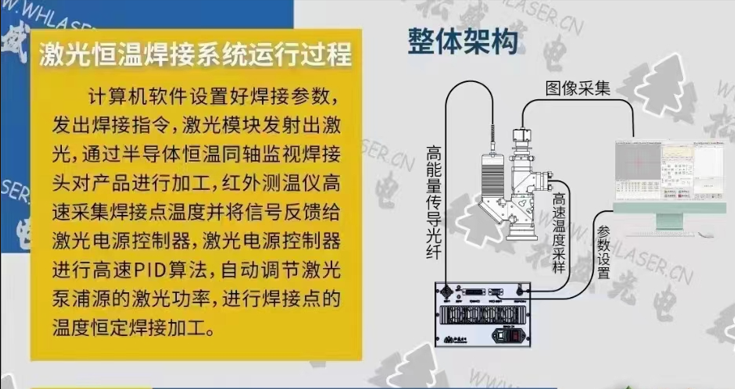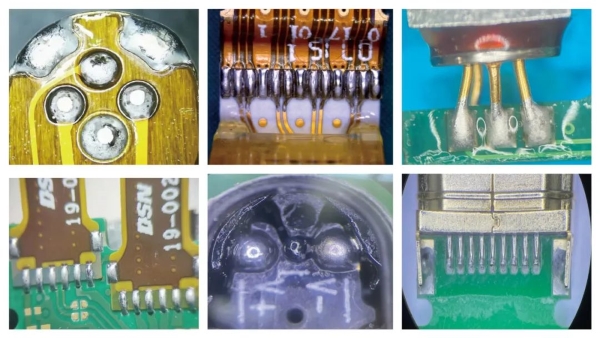Comparative Analysis of Laser Soldering vs Reflow Soldering Joints
Significant differences exist between laser soldering and reflow soldering in terms of their impact on solder joints. Based on the characteristics of electronic assembly technology, Songsheng Optoelectronics presents the following comparative analysis of how these two soldering processes affect solder joints:

Illustration of Heating Methods for SMT Reflow Soldering Process
I. Precision and Controllability
Laser soldering offers extremely high precision and localized control capability, enabling micron-level soldering points that are particularly suitable for high-density packaging and microelectronic component assembly. Its non-contact operation prevents physical contact damage and minimizes thermal impact on surrounding precision components.
In contrast, reflow soldering is better suited for large-area SMT component soldering, completing the soldering process through heating and cooling cycles across the entire PCB. While modern reflow soldering equipment features precise temperature control, its localized controllability and accuracy remain slightly inferior compared to laser soldering.
II. Heat-Affected Zone and Stress:
Laser soldering features minimal heat-affected zones due to localized rapid heating and cooling cycles, significantly reducing thermal stress. This effectively mitigates risks of PCB warping, component damage, and solder joint cracking.
Reflow soldering subjects the entire PCB board to thermal cycling, resulting in broader heat-affected zones. Thermal-sensitive components often require special protective measures against heat damage. Prolonged thermal exposure may also lead to board deformation over time.

Operation Flow Diagram of Laser Constant Temperature Soldering System
The diagram illustrates the operational process of the laser constant-temperature soldering system: The computer software first configures the welding parameters and issues the soldering command. The laser module then emits a laser beam, which is directed through the semiconductor constant-temperature coaxial monitoring soldering head for processing. Simultaneously, the infrared pyrometer performs high-speed temperature measurement at the soldering point and feeds back the signal to the laser power controller. Utilizing high-speed PID algorithms, the laser power controller automatically adjusts the pumping source's laser output power to maintain precise temperature control during the constant-temperature soldering process.
III. Material Compatibility:
Laser soldering demonstrates extensive material adaptability, including difficult-to-weld metals, with lower requirements for surface conditions. It can effectively penetrate oxide layers to achieve quality welds.
Reflow soldering primarily applies to SMT components using solder paste. For specific materials or applications requiring high surface preparation standards, it offers less flexibility compared to laser soldering.
IV. Production Efficiency and Cost Analysis
Laser soldering is particularly suitable for single-point or small-area welding applications, making it ideal for high-precision and low-volume production. While the initial equipment investment is relatively high, it effectively reduces subsequent rework costs. In contrast, reflow soldering is better suited for mass production environments, featuring lower equipment costs and demonstrating superior efficiency and cost-effectiveness at scale, especially for standard SMT component assembly.
V. Environmental Impact and Sustainability Considerations
Laser soldering generates minimal waste and pollutants, representing a more environmentally friendly welding approach. On the other hand, reflow soldering may produce volatile organic compounds (VOCs) during the process, requiring proper ventilation and purification systems to minimize environmental contamination.

Illustration of Laser Soldering Samples
VI. Wettability Performance
Laser soldering demonstrates superior wettability characteristics due to its high precision and automated operation. The technology's rapid heating capability, minimal heat input, and precise position control effectively prevent poor wettability issues. In contrast, reflow soldering frequently encounters wettability problems where the solder alloy fails to properly spread across the joint surface, resulting in unreliable solder connections. These wettability defects primarily stem from oxidation of pad or pin surface coatings, insufficient plating thickness, or suboptimal manufacturing processes, all of which can significantly compromise joint reliability.
VII. Additional Influencing Factor
Laser soldering offers distinct advantages including rapid heating cycles, minimal thermal input with significant thermal effect, precise weld positioning control, fully automated operation, accurate solder dosage regulation, and exceptional joint consistency. Conversely, in vacuum reflow soldering processes, component stand-off height experiences noticeable reduction, causing solder to spread laterally which increases the risk of solder bridging defects.
Conclusion
In summary, both laser soldering and reflow soldering possess unique advantages, with process selection dependent on specific application requirements and production demands. Laser soldering proves particularly suitable for high-precision applications, low-volume production, and heat-sensitive component assembly, while reflow soldering demonstrates superior efficiency and cost-effectiveness in high-volume manufacturing of standard SMT components. With the ongoing miniaturization and precision trends in electronic components, laser soldering technology is anticipated to witness significant expansion in its application scope.
Contact: Mr.Xiao
Phone: +86-13385280662
E-mail: market001@whlaser.cn
Add: Room 02, Floor 5, Building 9, Gezhouba Sun City, No. 40, Gaoxin 4th Road, Donghu New Technology Development Zone, Wuhan